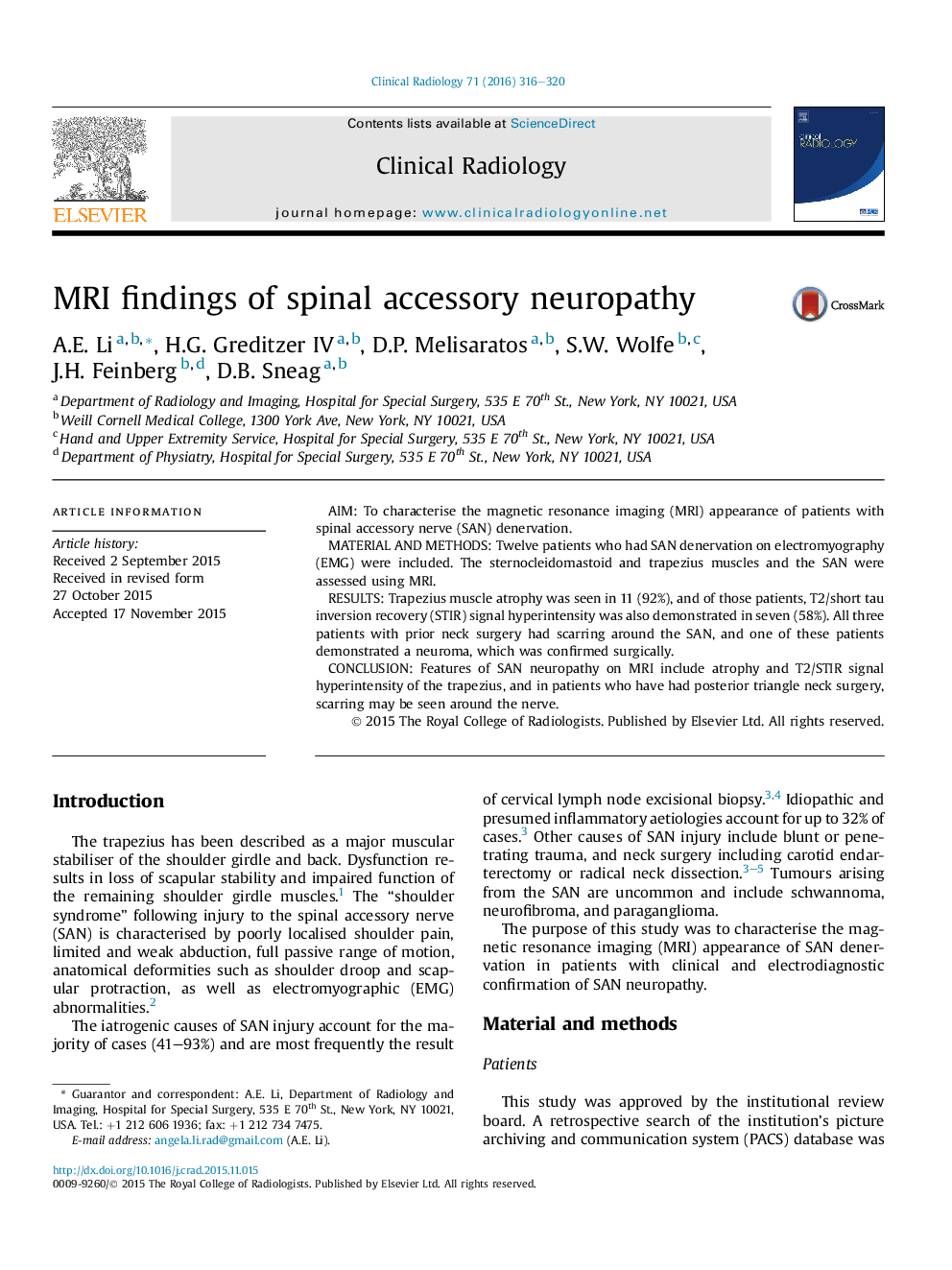| Article ID | Journal | Published Year | Pages | File Type |
|---|---|---|---|---|
| 3981394 | Clinical Radiology | 2016 | 5 Pages |
•Spinal accessory nerve injury is most commonly the result of neck surgery.•MRI findings include trapezius muscle atrophy and T2 signal hyperintensity.•In cases of suspected injury, the course of the spinal accessory nerve should be assessed on MRI.
AimTo characterise the magnetic resonance imaging (MRI) appearance of patients with spinal accessory nerve (SAN) denervation.Material and methodsTwelve patients who had SAN denervation on electromyography (EMG) were included. The sternocleidomastoid and trapezius muscles and the SAN were assessed using MRI.ResultsTrapezius muscle atrophy was seen in 11 (92%), and of those patients, T2/short tau inversion recovery (STIR) signal hyperintensity was also demonstrated in seven (58%). All three patients with prior neck surgery had scarring around the SAN, and one of these patients demonstrated a neuroma, which was confirmed surgically.ConclusionFeatures of SAN neuropathy on MRI include atrophy and T2/STIR signal hyperintensity of the trapezius, and in patients who have had posterior triangle neck surgery, scarring may be seen around the nerve.
